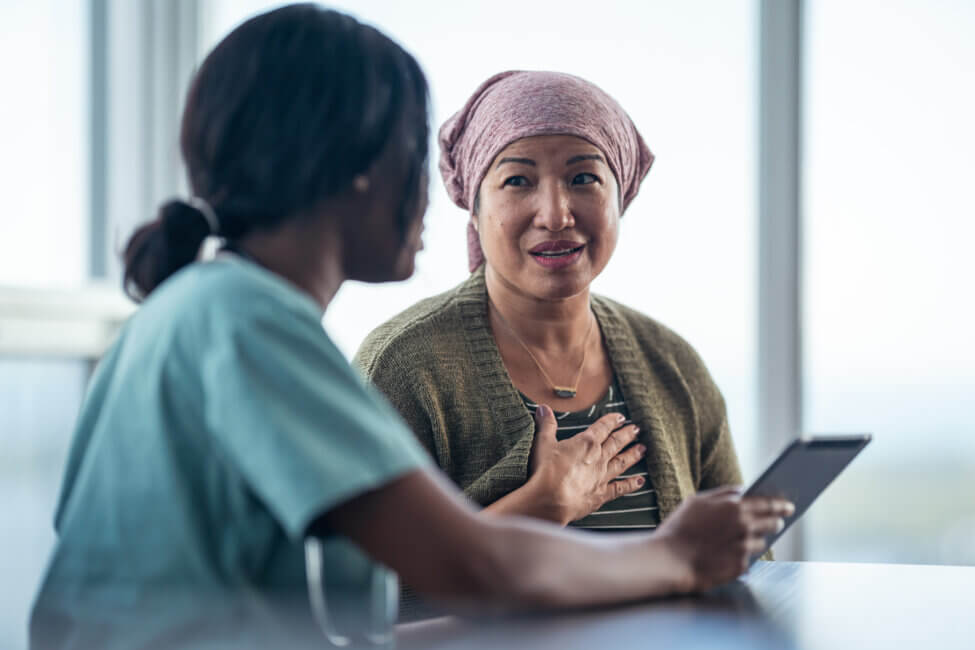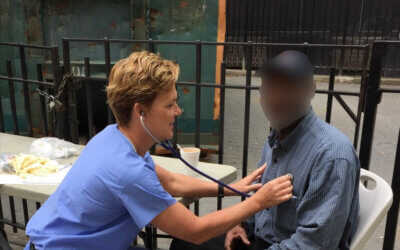How Chapters Health Supports Cancer Patients: Five Things to Know
The open access manager of Chapters Health explains the level of care and access cancer patients can expect when making the transition to hospice care.

What do you imagine when you think of a hospice setting? Comfort measures only? Pain management? No oncology treatments? It’s not always that simple and it’s one of the many myths about hospice care. Patients should not have to choose between their hospice benefits and treatment for their condition. That’s the philosophy behind open access and how Chapters Health System supports cancer patients.
So how does that philosophy apply to cancer patients who make the transition to our hospice services? What therapies can they continue under our care? In short… it depends. Every patient is different, and we evaluate it on a patient-to-patient basis. For many patients and families, this explanation is frustrating. In hopes of easing that frustration and simplifying the process, here are five things to know when considering hospice with Chapters Health.
1. Some chemotherapy and certain types of radiation are not off the table
There are different goals for every patient. Some would like to extend their life enough to reach a certain milestone. Others simply desire to have their symptoms managed and live out their lives as comfortable as possible. No matter what the goal is, it’s the duty of the hospice provider to allow the care to be patient driven.
For example, a patient with esophageal cancer may have a tumor pressing on the esophagus, preventing them from swallowing. There are of course ways to manage the patient’s pain, but should palliative chemotherapy or radiation be a consideration? If you can shrink that tumor and improve the patient’s ability to swallow, while allowing them to remain alert and interact with their family, you’ve accomplished the primary goal of hospice, which is improving a patient’s quality of life in the time they have left. There are so many ways chemotherapy, radiation and other therapies can aid in symptom management for hospice patients, as explained by Dr. Stewart Stein, Chapters Health vice president of medical services
According to a study in 2018, 76 palliative care, hospice and oncology providers at six VA Medical Centers agreed that the open access model of care proved to be the most beneficial for cancer patients with a prognosis of six months or less.
“Our open access in general is so broad,” said Terri Massaro, open access manager for Chapters Health. “Other hospices say they do open access, but nobody does it like we do. Depending on where our patient is in their disease process, there are many interventions that may be part of the hospice plan of care such as diagnostic scans, laboratory studies, artificial nutrition and hydration, and management of drains and tubes, just to name a few.”
2. The process is ultimately patient driven
What if a cancer patient and their oncologist insist chemotherapy is the best course? How does a hospice provider decide whether to continue supporting the care plan? It boils down to whether the proposed therapy meets hospice guidelines and the functionality of the patient. Are they supporting their nutritional status? Is the patient ambulatory? Can they complete at least some activities of daily living (ADLs) without assistance? If the answer is yes to any of these questions, then there’s a greater chance Chapters Health can support the treatment.
However, the issue is never black and white. There are many areas of gray when it comes to how a hospice provider supports outside treatment for patients.
“The guidelines are not yes and no. It’s how can we safely meet your goals?” said Massaro. “Our patients are sometimes scared. Most of them would like to remain in their home. How can we help them meet that goal? How can we support them where they want to be?”
3. Participating in clinical trials does not rule out access to hospice care
No cancer patients go into a clinical trial not hoping they can be one of the examples where a drug has helped them or extended life. That’s just basic human nature. However, some families may believe that because their loved one is in a clinical trial that means they can’t receive hospice benefits. They’re not always right.
“These clinical trials are either existing drugs or new drugs where nobody is promising they’re going to get a cure,” said Massaro. “The trials are generally covering the costs of the drugs, the scans and other things that go along with that. If someone wants to participate in a clinical trial that may help them as well as contribute to a body of research that may also help someone else one day, we want to support that goal. “
4. The goal is to keep the cancer patients at home
Massaro said the goal is to keep a patient comfortable in their own home. That’s important to remember when understanding what treatments, a hospice provider can support.
“We always want to err on the side of supporting the patient. There are many side effects {of cancer treatment} that can be safely and effectively managed at home. However, there are some treatments/side effects that are beyond the scope of what can be managed in the home. That is why each therapy is carefully evaluated.”
But Massaro added many other treatments such as chemotherapy, blood infusions and certain types of radiation are manageable and commonly supported by Chapters Health because symptoms are manageable without requiring frequent hospitalization.
5. How is home health different from hospice for cancer patients?
The major benefit of hospice is a higher level of support provided to the patient and family. In home health you have less visits from clinicians and you don’t benefit from the services of a dedicated interdisciplinary group (IDG). This group consists of the clinicians you would normally see such as nursing assistants and nurses, but it also includes social workers, chaplains and volunteers.
Massaro also said home health is “objective based.” The patients generally have specific needs such as wound care, diabetes education or physical therapy following a surgery. Once that objective is met, home health is generally discontinued, and the number of visits may be limited. It differs greatly for a hospice patient. The number of visits and who visits changes to meet the needs of the patient and family, whether they are medical, nursing, psychosocial or spiritual. Care is not discontinued if a patient continues to meet hospice criteria.
Chapters Health System is committed to serving the needs of its patients, families, caregivers, health providers, partners and communities. If you know someone who could use supportive care in the comfort of his or her home, please call our helpful Chapters Health and
HospiceHelp24® team at 1.866.204.8611 or Contact Us.
Keep Exploring
















